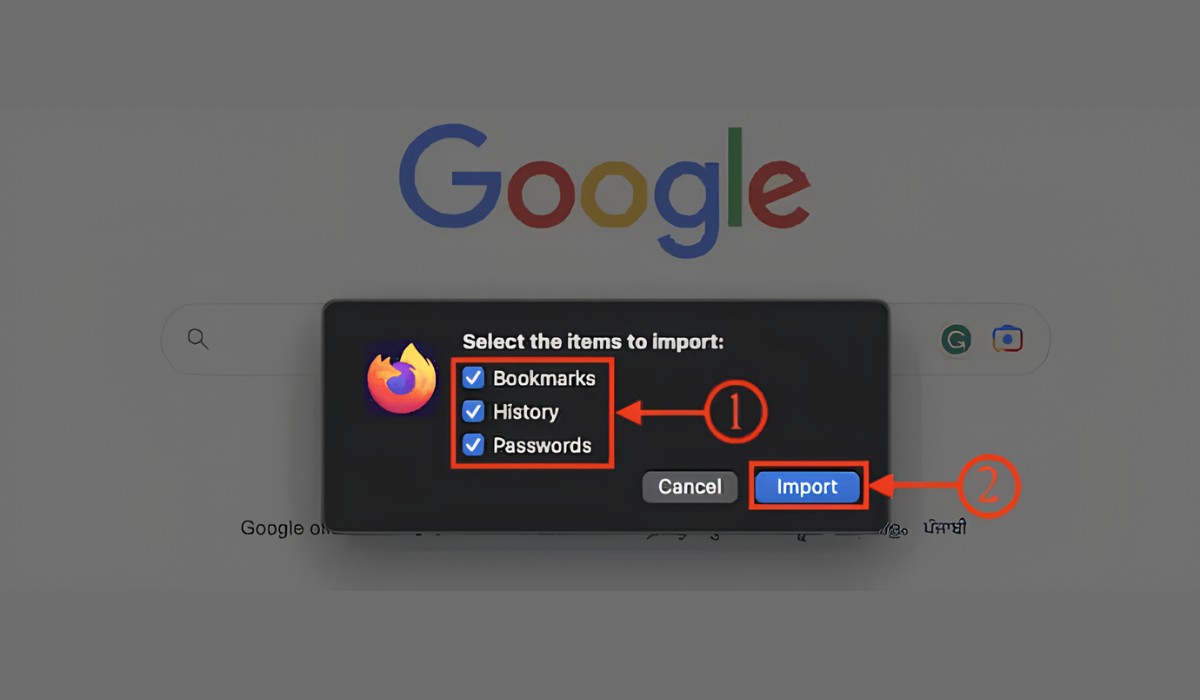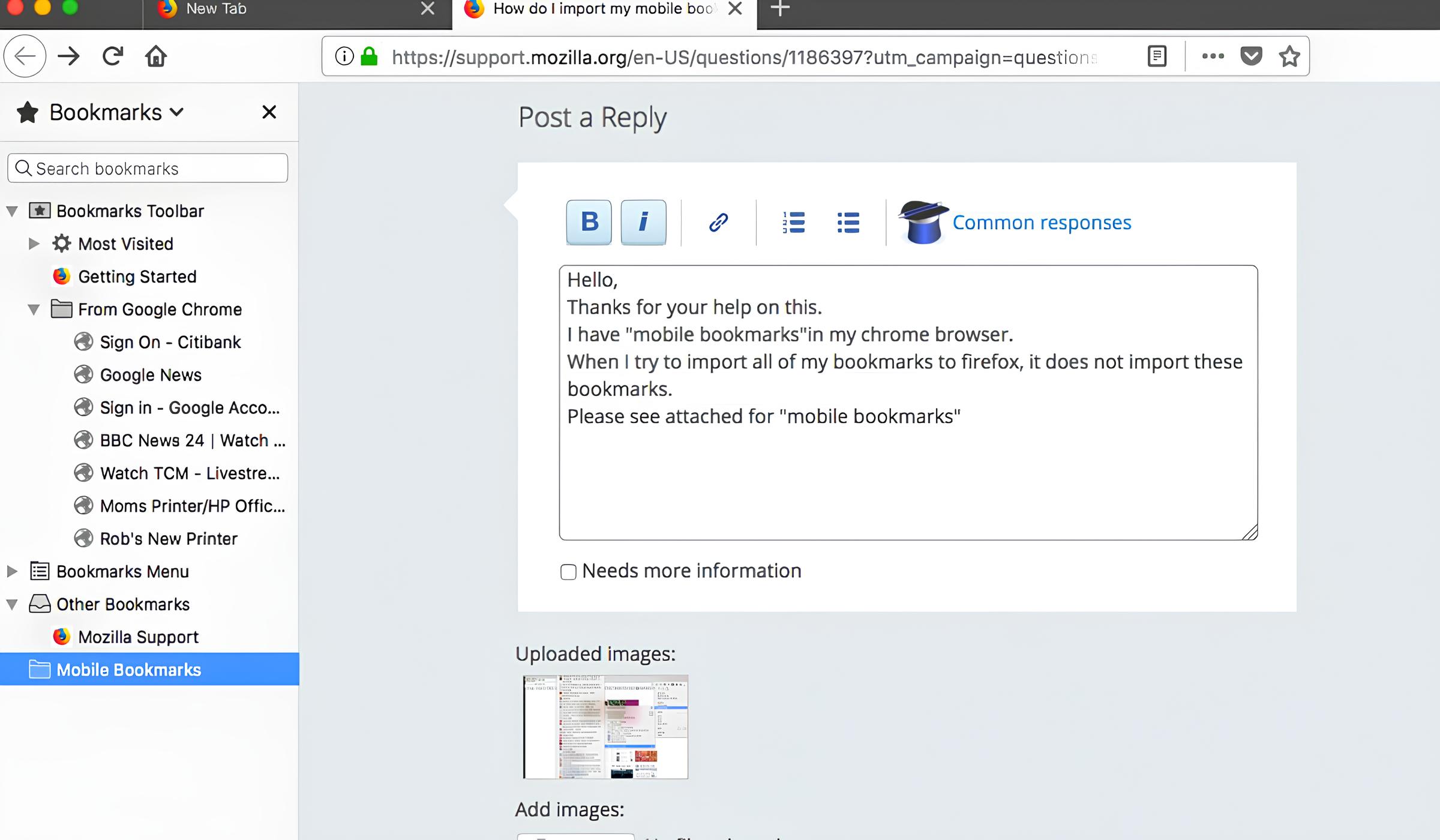Introduction
Are you making the switch from Chrome to Firefox and want to seamlessly transfer your open tabs? Or perhaps you're simply exploring the idea of using both browsers and wish to synchronize your browsing experience? Whatever the reason, the process of importing tabs from Chrome to Firefox is surprisingly straightforward. This guide will walk you through the simple steps to achieve this, ensuring that you can effortlessly transition between browsers without losing track of your important tabs.
Whether you're a seasoned internet surfer or a casual user, the ability to import tabs between browsers can significantly enhance your browsing efficiency. By seamlessly transferring your open tabs, you can pick up where you left off and maintain a consistent browsing experience across different platforms. This can be particularly useful when transitioning between work and personal devices or when experimenting with different browsers to find the perfect fit for your needs.
In the following sections, we will delve into the step-by-step process of exporting tabs from Chrome and importing them into Firefox. By following these instructions, you can streamline your browsing experience and ensure that your valuable tabs are readily accessible across different browsers. Let's embark on this journey to seamlessly integrate your browsing experience and unlock the full potential of both Chrome and Firefox.
Step 1: Exporting Tabs from Chrome
When it comes to transitioning between browsers or simply wanting to backup your open tabs, exporting tabs from Chrome is a simple and efficient process. This ensures that you can seamlessly transfer your browsing session to another browser or device without losing track of important websites. Here's a detailed guide on how to export tabs from Chrome:
-
Open Chrome Browser: Launch the Chrome browser on your computer. Ensure that you are using the latest version of Chrome to access all the available features.
-
Access the Menu: Click on the three-dot menu icon located at the top-right corner of the browser window. This will open a dropdown menu with various options.
-
Select "Bookmarks": From the dropdown menu, hover over the "Bookmarks" option. This will reveal a secondary menu with additional bookmark-related options.
-
Choose "Bookmark Manager": Click on the "Bookmark Manager" option from the secondary menu. This will open a new tab within the Chrome browser, displaying your saved bookmarks and bookmark folders.
-
Export Bookmarks: Within the Bookmark Manager tab, locate and click on the "More" option, represented by three vertical dots. This will open a dropdown menu with additional bookmark management options.
-
Select "Export Bookmarks": From the dropdown menu, click on the "Export Bookmarks" option. A file explorer window will appear, allowing you to choose the destination and file name for the exported bookmarks file.
-
Save the HTML File: Choose a suitable location on your computer to save the exported bookmarks file. Additionally, you can rename the file to something descriptive, making it easier to identify later.
-
Confirm Export: After selecting the destination and file name, click "Save" to confirm the export process. Chrome will save your open tabs as a single HTML file in the specified location.
By following these straightforward steps, you can successfully export your open tabs from Chrome, ensuring that you have a backup of your browsing session or the ability to import these tabs into another browser, such as Firefox. This process provides a convenient way to maintain continuity in your browsing experience and seamlessly transition between different browsers or devices.
Step 2: Importing Tabs to Firefox
Now that you have successfully exported your tabs from Chrome, the next step is to import them into Firefox. This process allows you to seamlessly transfer your browsing session from Chrome to Firefox, ensuring that you can pick up where you left off without losing track of important websites. Here's a detailed guide on how to import tabs to Firefox:
-
Open Firefox Browser: Launch the Firefox browser on your computer. Ensure that you are using the latest version of Firefox to access all the available features.
-
Access the Menu: Click on the three horizontal lines icon (hamburger menu) located at the top-right corner of the browser window. This will open a menu with various options.
-
Select "Library": From the menu, hover over the "Library" option. This will reveal a secondary menu with additional library-related options.
-
Choose "Bookmarks" and "Show All Bookmarks": Click on the "Bookmarks" option from the secondary menu, and then select "Show All Bookmarks." This will open the Library window, displaying your saved bookmarks and bookmark folders.
-
Import Bookmarks from HTML File: Within the Library window, click on the "Import and Backup" dropdown menu located at the top of the window. From the options, choose "Import Bookmarks from HTML." This will prompt a file explorer window to appear, allowing you to navigate to the location of the exported bookmarks file from Chrome.
-
Select the HTML File: Navigate to the location where you saved the exported bookmarks file from Chrome. Select the file and click "Open" to initiate the import process.
-
Confirm Import: After selecting the HTML file, Firefox will begin importing the bookmarks and open tabs from the file. Once the process is complete, you will find the imported tabs organized within the bookmarks library, ready to be accessed as individual bookmarks or open tabs.
By following these straightforward steps, you can seamlessly import your tabs from Chrome into Firefox, ensuring that your browsing session remains uninterrupted as you transition between browsers. This process provides a convenient way to synchronize your browsing experience and maintain continuity across different platforms. Whether you're exploring the features of Firefox or simply transitioning between browsers, importing tabs allows you to effortlessly carry over your browsing session and access important websites without any hassle.
Conclusion
In conclusion, the ability to import tabs from Chrome to Firefox provides a seamless transition between browsers, allowing users to maintain continuity in their browsing experience. By following the simple steps outlined in this guide, you can effortlessly export your open tabs from Chrome and import them into Firefox, ensuring that your valuable browsing session remains intact.
The process of exporting tabs from Chrome involves accessing the bookmark manager, exporting the bookmarks as an HTML file, and saving it to a preferred location on your computer. This straightforward procedure ensures that your open tabs are preserved in a portable format, ready to be imported into another browser.
Upon transitioning to Firefox, the import process involves accessing the library, selecting the option to import bookmarks from an HTML file, and choosing the exported file from Chrome. This seamless integration allows you to effortlessly carry over your browsing session, ensuring that you can pick up where you left off without any disruptions.
The ability to import tabs between browsers offers practical benefits for users who seek a consistent browsing experience across different platforms. Whether you're exploring the features of Firefox, conducting cross-browser testing, or simply transitioning between work and personal devices, the ability to import tabs ensures that your important websites are readily accessible.
Furthermore, this process serves as a valuable backup mechanism, allowing users to safeguard their open tabs and bookmarks by creating portable copies that can be imported into various browsers or devices. This not only enhances browsing efficiency but also provides peace of mind, knowing that your valuable browsing session is securely stored and easily transferable.
In a digital landscape where flexibility and convenience are paramount, the ability to seamlessly import tabs between Chrome and Firefox empowers users to tailor their browsing experience to their preferences. Whether it's for work, research, or leisure, the process of importing tabs ensures that users can effortlessly transition between browsers without losing track of their important websites.
In essence, the seamless integration of browsing sessions through the importation of tabs exemplifies the user-centric approach embraced by modern web browsers. By providing users with the tools to effortlessly synchronize their browsing experience, browsers such as Chrome and Firefox empower individuals to explore the vast expanse of the internet with unparalleled ease and flexibility.

























